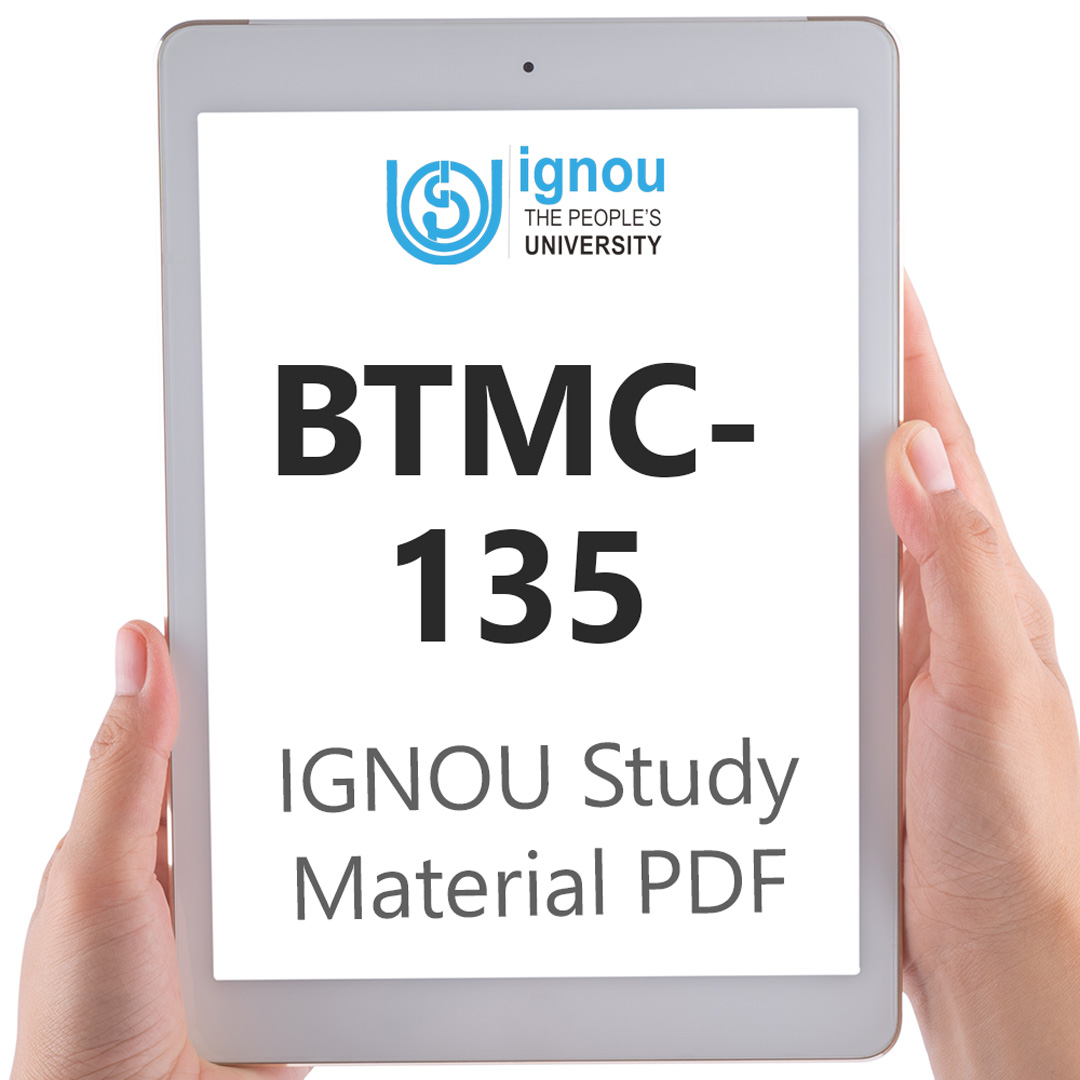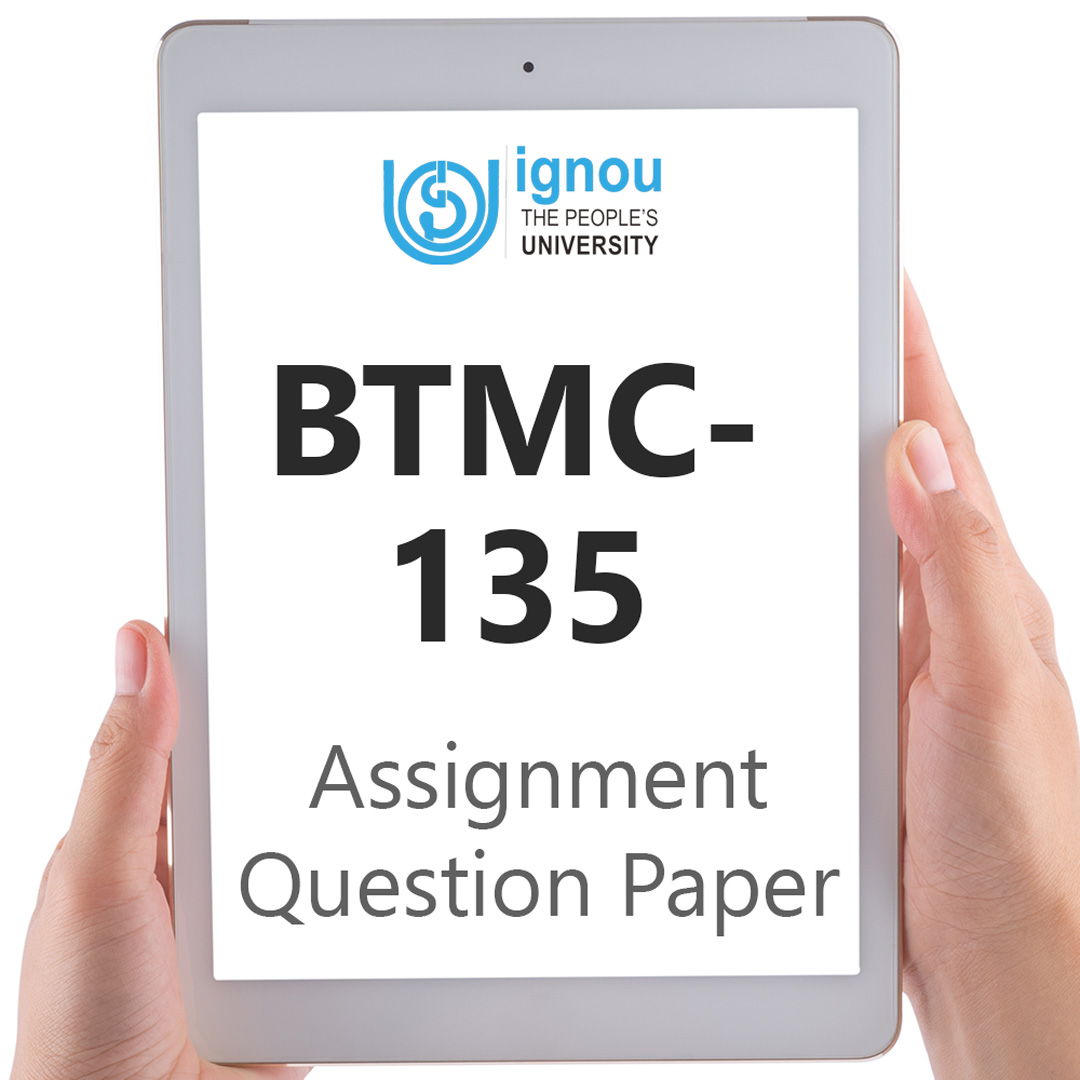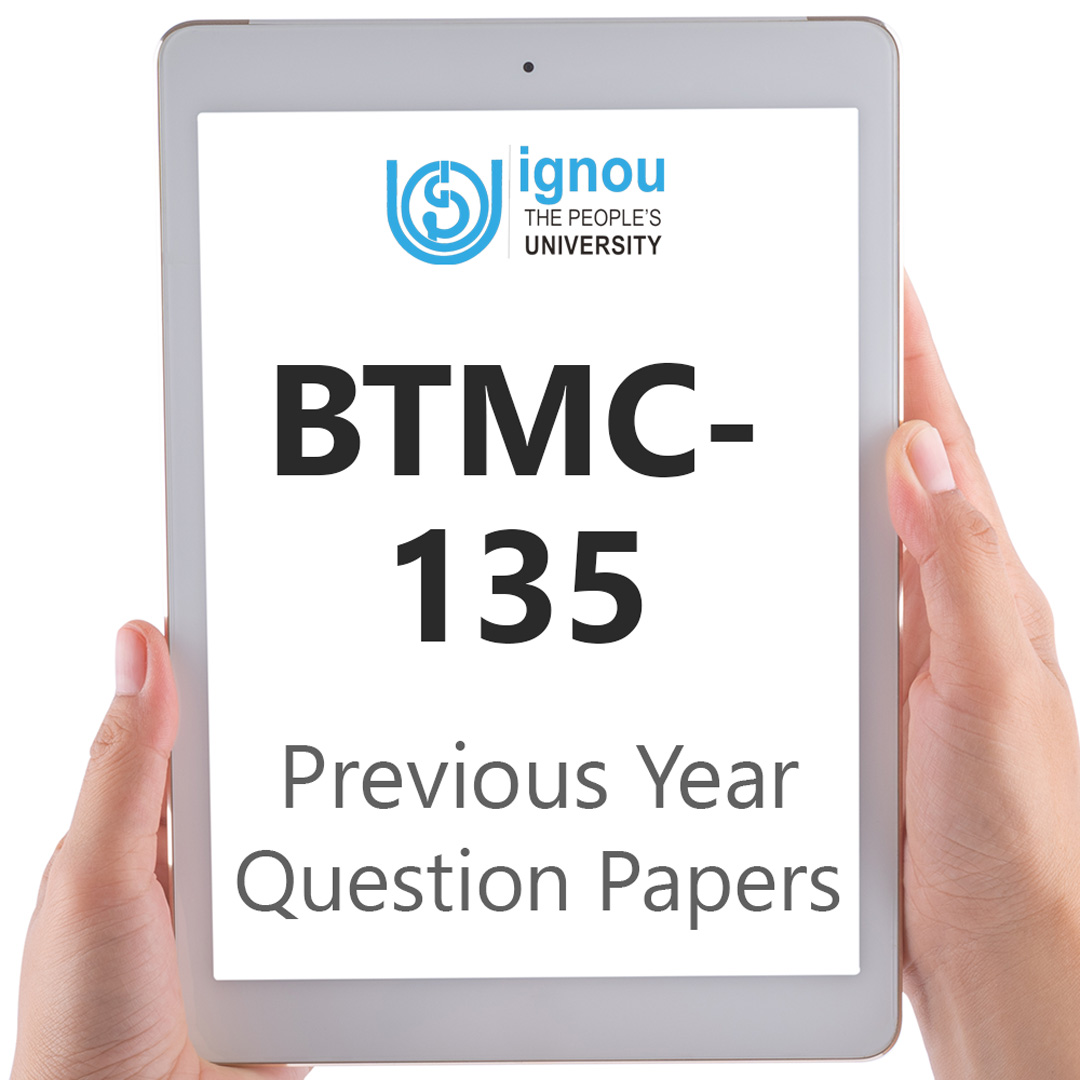If you are looking for BTMC-135 IGNOU Solved Assignment solution for the subject Concept and Impacts of Tourism, you have come to the right place. BTMC-135 solution on this page applies to 2022-23 session students studying in BAVTM courses of IGNOU.
BTMC-135 Solved Assignment Solution by Gyaniversity
Assignment Code: BTMC-135/TMA/2022-23
Course Code: BTMC-135
Assignment Name: Concept and Impacts of Tourism
Year: 2022-2023
Verification Status: Verified by Professor
Assignment A
Answer the following in about 500 words each.
Q1) What are the different approaches to Tourism Studies? Explain in detail.
Ans) Different approaches to Tourism Studies as follows:
Institutional Approach: Institutional Approach is based on looking at tourism from this point of view, especially from the point of view of those who work in the middle. This approach, also called middlemen approach, gives an emphasis on the study of institutions such as middlemen, wholesalers and retailers engaged in tourism. As far as tourism is concerned, the primary intermediaries are the tour operators and travel agencies.
Product Approach: The most important part of this approach is studying the different kinds of tourism products and how they are made, sold, and used. The mode of production, marketing, distribution, and consumption are considered in this method.
Historical Approach: The Marriam-Webster Online Dictionary defines this idea as "a way of presenting information in which a topic is looked at in terms of its earliest stages and its later changes and developments are traced in a historical order." With a historical approach to tourism, activities and institutions are looked at from a historical point of view, through their different stages of development.
Managerial Approach: People think that the managerial approach is a more scientific way to learn about socioeconomic concepts. The focus is on the activities or functions of management, and is about how decisions are made at different levels of a company. The most important part of managing things is making the right decisions, and a manager's approach is mostly about how they deal with specific problems and situations.
Economic Approach: From an economic point of view, tourism is the total amount that tourists spend within a region and the total amount of mostly economic activities that are directly related to the entry, stay, and movement of people from outside the region for a certain set of reasons. They focus on supply, demand, balance of payments, foreign exchange, export earnings, employment, spending, development, multipliers, and other economic factors.
Sociological Approach: Tourism is often called the "people industry," and since it is a service industry, it needs people to provide services that meet the needs of the tourists. Tourism also has a number of positive and negative effects on society. Their interactions can also have long-lasting effects on the society . People in a place can change over time if they spend a lot of time with tourists and learn from them.
Geographical Approach: A popular way to look at tourism is from a geographical point of view. This is because tourism and geography are closely related. Tourism studies pay a lot of attention to how tourism affects the places it goes. When we look at tourism from a geographical point of view, we may have to study the movement of people as they travel from one place to another, the interactions between tourists and the people of the destination region, climate-related issues, etc.
The Systems Approach: You can also look at tourism as a system. It means that there has to be more than one thing. Yes, there are things like tourists, industries, geography, and other things like that. All parts are linked and connected to each other. The way one does may affect how the other does.
Q2) Describe Maslow’s Need Hierarchy Theory of Motivation.
Ans) Maslow's hierarchy of needs Hierarchy is thought to be the most accurate way to back up the Motivation process theory.
One of the strange things about this theory is that a person's needs move from least important to most important, or from bottom to top. A person can only move from a lower-level need to a higher-level need after the lower-level need has been met. Once a certain level of need is met, it can no longer motivate the person to do more. Maslow’s theory is based on a list of five basic needs, in order of importance:
Basic Physiological Needs: This group is made up of the needs that are the most basic. Like hunger, sleep, thirst, and so on. This idea can also be used in the travel and tourism business. When travelling, a tourist makes sure there are places to stay, water that is safe to drink, and restaurants that serve good food. If these needs are not satisfied the human body cannot function optimally. Maslow considered physiological needs the most important as all the other needs become secondary until these needs are met.
Needs for Safety and Security: These needs keep people from getting hurt physically or emotionally. For instance, job security, income stability, etc. In the tourism industry, places can only bring in tourists if they are safe and don't make it hard for people to have a good time. So, a tourist destination could make sure people are safe and secure by helping them and making sure they can get back home in an emergency For example, emotional security, financial security, law and order, freedom from fear, social stability, property, health and wellbeing.
Affiliation and Belonging Needs: The third need is to form and/or build relationships with other people to feel like you belong. For tourists, this is a must-have in order to get to know the locals and really get into the travel experience.
Esteem Needs: After your affiliation and belonging needs are met, you have a fourth need, which is to be respected. This means having self-respect, being recognised, and getting attention. This is very clear in the tourism industry, since a lot of people travel to brag to their friends and family and to improve their social status. Maslow classified esteem needs into two categories esteem for oneself and the desire for reputation or respect from others. Maslow indicated that the need for respect or reputation is most important for children and adolescents and precedes real self-esteem or dignity.
Self-actualisation Needs: This is the last of the pyramid's needs. It includes growing and being happy with yourself. In the tourism industry, people travel to improve a certain skill, such as hiking, trekking, or doing activities like scuba diving, caving, etc. This helps them build up their stamina, get better at taking risks, and do many other things.
Assignment B
Answer the following in about 250 words each.
Q3) What are the factors that affect Demand & Supply in Tourism?
Ans) Factors that affect Demand & Supply in Tourism as follows:
Things that Affect Tourism Demand
Socio-economic Factors: These factors include income, buying power, disposable income, living standards, economic status, the availability of paid vacations, and incentives from the company.
Psychological Factors: It include personal motivations, personal traits, perceptions, or biases, awareness, education, personality type, and physical health, among other things.
Technological Factors: It include mobile phones, TVs, computers with internet, electronic displays, and mobile apps like Yatra.com, Goibibo, Oyo rooms, make my trip, etc.
Geographical Factors: It include the location of the destination, its landscapes, snowy peaks, rivers, climate, seasons, and natural dangers, among other things.
Factors at the Destination: These include the level of development, the quality of the product, the rules for tourists and travellers, the destination's tourism policy, creative tourism trends, the destination's image and branding, and so on.
Things that Affect Supply in Tourism
Location: Markets that are easy to get to have a better supply of tourist goods at reasonable prices. Most of the time, there are not many tourist services in places with hard terrain.
Technology: Markets with better electronics can get a better supply of tourism products. Consumers can easily access different tourism products through mobile apps and websites of different tour operators.
Providers of Services: The presence of service providers, like tour operators and travel agents, in a given market has a direct effect on supply. The more service providers there are, the more likely it is that there will be a good supply of tourism products and prices will be more competitive.
Infrastructure: Better hotels, restaurants, public utilities, and access to tourist spots all affect the supply of tourism products in a positive way, and the same is true in reverse.
Q4) What are the different types of Alternative Tourism?
Ans) There are different kinds of alternative tourism, which can be put in the following ways:
Nature-based Tourism: This is a type of tourism that takes place in the outdoors or in a natural setting.
Culture Tourism: It is another popular type of alternative tourism. It includes cultural heritage, ethnic, religious, cuisine, music, arts and crafts, etc.
Responsible Travel: Responsible travel is a type of tourism where the tourist is not only responsible, but also aware of the local culture and economy.
Geotourism: It is a new type of tourism that protects or improves the environment, history, aesthetics, culture, and well-being of a place.
Voluntourism: In this type of tourism, volunteers usually work with a service that sends them to a developing country or a disaster zone to help out.
Accessible Tourism: This type of tourism makes sure that places, accommodations, attractions, products, and services are easy for all people to use, especially those with physical or mental disabilities or who are older.
Disaster Tourism: When tourists go to a place that is or has been affected by natural disasters, civil unrest, or war, this is called disaster tourism.
Ethnotourism: It is a type of tourism that focuses on learning about the culture and traditions of local people.
Poverty Tourism: This is also called ghetto tourism, shanty tourism, or slum tourism. People learn and become more socially and culturally aware through poverty tourism.
Dark Tourism: is a type of travel where people go to places with a sad past, like old battlefields or prison camps. It is also called grief tourism or black tourism.
Doom Tourism: Usually, "doom tourism" means going to places that are about to die out or could die out.
Q5) Describe the various environmental components which affect the tourism system .
Ans) There are various environmental components which affect the tourism system,
which are as follows:
Economic Factors: Economic factors have a big effect on the tourism system because tourism is directly linked to the economy or the per capita income of the tourist-generating area, as well as the locals' standard of living and disposable income.
Political Factors: The current political situation and how stable it is have a big effect on the tourism system. If the political situation at a certain destination is unstable, it slows down the growth and development of tourism.
Technological Factors: Technology has changed how tourists from the region travel, and organisations in the tourism industry are using technology to market their services and products in the tourist destination region.
Social/Cultural Factors: The tourism system is affected in big ways by social or cultural factors. Based on how the people in the tourism destination region act, tourists from the region that sends them there will be drawn there.
Legal Factors: The legal factors are the laws and rules that are in place in the tourist-attracting area, the transit route area, and the tourist destination area.
Environmental Factors: The rich variety of life in the area where the tourist destination is located is related to the environmental factors. The more pressure we put on the environment to be clean, the more it will hurt biodiversity.
Assignment C
Answer the following in about 100 words each.
Q6) Describe Leisure and Recreation in context to Tourism.
Ans) Visiting a place to fulfil a desire or motivation is usually something that can be done when there is enough time left over after doing the fully required and partially required work.
Leisure needs to be studied in tourism studies because it is the main idea on which the understanding of how this professional knowledge is used is built.
One of the most important things that tourism is used for is recreation. There are many different kinds of tourism, such as business tourism, health tourism, educational tourism, cultural tourism, social tourism, and so on. Recreation tourism, then, is when people move around as part of the tourism industry mainly to take part in activities that make them feel better and are done away from their usual home.
Q7) Differentiate between Traveller and Tourist.
Ans) Buses, trains, and planes are all ways to get around. But tourism also involves planning for other things, like where to stay, how to get tickets to see sights, what to eat, how to find guides or escorts, etc.
The different ways that travellers and tourists act can help you figure out the difference between travel and tourism. The differences between a traveller and a tourist have more to do with how people want to be seen than with any clear criteria.
Q8) Differentiate between Ecotourism and Rural Tourism.
Ans) Rural tourism is when a tourist goes to a destination that is in a rural area and wants to enjoy or participate in all the activities there.
Ecotourism is defined as "responsible travel to natural areas that protects the environment, supports the well-being of local people, and involves interpretation and education", according to the International Ecotourism Society.
Q9) What are the Push and Pull factors in tourism motivation.
Ans) Push and Pull factors in tourism motivation as follows:
Push factors
Escape
Self-Discovery
Leisure
Adrenaline rush
Spending time with family and friends
Pull Factors
Natural Beauty
Cultural attractions
Accomodation
F&B services
Recreation Facilities
Q10) Write short notes on the following:
Ans)
(i) Tour Escorts
Ans) Tour escorts are the people who go with "package tours" or groups of tourists on their trips. When people go on a tour and have an escort, they feel safe and have the convenience of a way to get around, a place to stay, and food.
(ii) Theme Parks
Ans) Theme parks are man-made parks that are built and designed to give visitors entertainment and a lot of new experiences. The main reason why theme parks are so popular and can bring in so many tourists is that there is no real "off season" and that thrills and fun can be had by people of all ages, from kids to adults.





